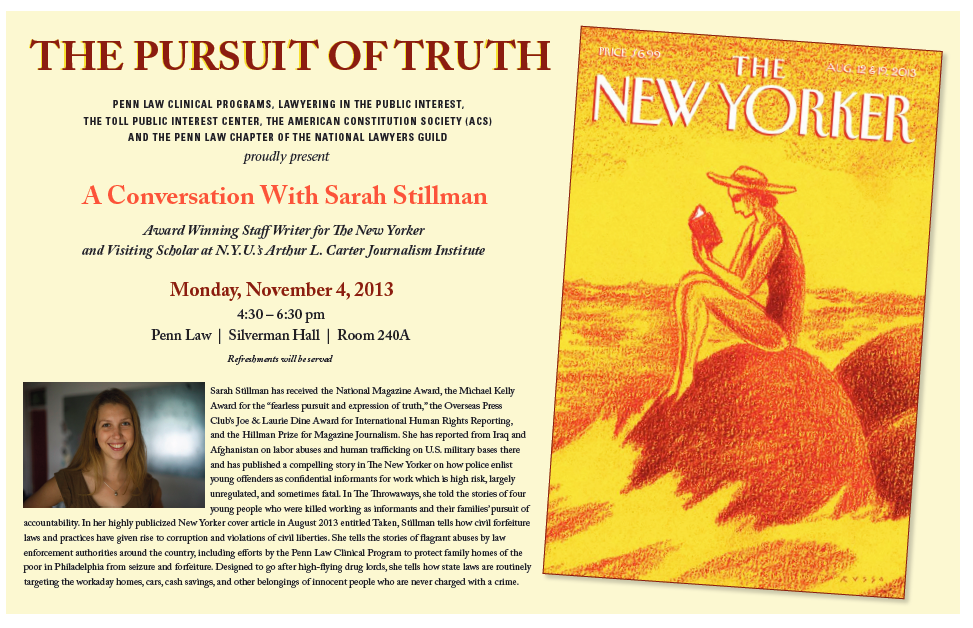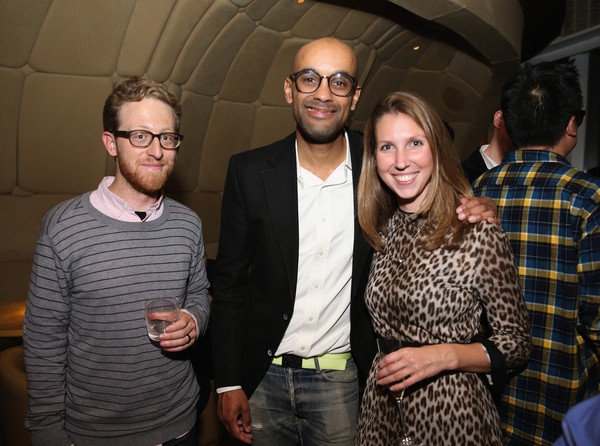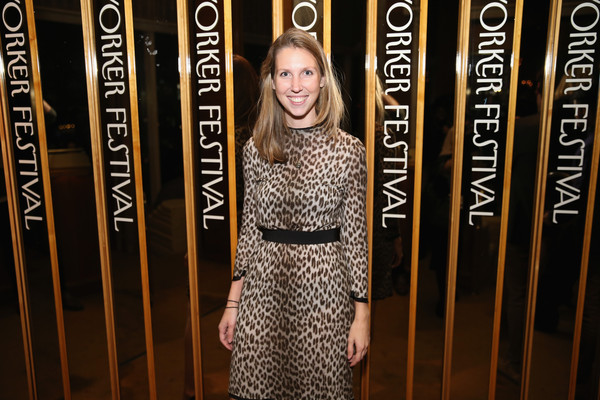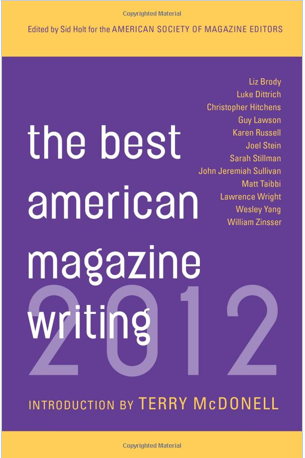 I’m looking forward to being part of a public conversation at Penn Law School this coming Monday, for a whole slew of reasons:
I’m looking forward to being part of a public conversation at Penn Law School this coming Monday, for a whole slew of reasons:
1. The talk came about at the invitation of Prof. Louis Rulli, the school’s Director of Clinical Programs who is also a particularly creative thinker in the realm of public interest law. In my recent story on police abuses of civil asset forfeiture laws, I highlighted the work of Rulli’s civil practice clinic in defending Philadelphia families who’ve had their homes seized without much due process. Some of the cases his students have worked on are pretty jaw-dropping. I’m eager to learn about the other sorts of issues they’re tackling, within and beyond civil forfeiture.
2. I like the question Prof. Rulli has posed for the occasion, which, to put it loosely, goes something like: “What are we to make of the relationship between public interest lawyers and journalists?” What insights can journos glean from lawyers — what methodological tricks of the trade, what concrete knowledge about where systems of governance are working and where they aren’t, etc.? And what can public interest lawyers take away from feature reporters — about the powers of narrative, for instance, and its impact on public perceptions of a given policy or set of facts? There are interesting sub-questions, too, about how to preserve fairness, objectivity, and complex independent thinking when working as a reporter in tandem with litigators who have a different set of professional imperatives.
3. It’s going to be a conversation, rather than just a talk. And I like that, a lot, because there’s plenty I’m eager to hear and learn from professors and students — down to the nitty-gritty of how they chose their cases, how/whether they think about legal complaints through a narrative lens, etc.
4. They made a really nice poster. To sum up, the event is Monday, Nov. 4th, from 4:30 – 6:30 PM, in Silverman Hall, Rm. 240A.











